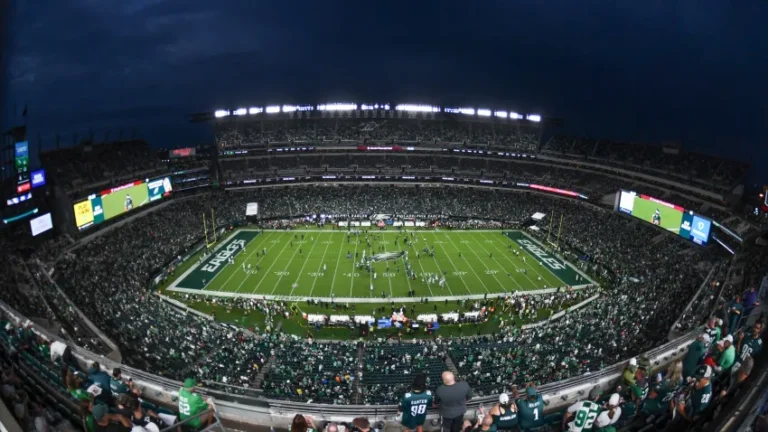NFL stadium sustainability is gaining momentum as venues across the league adopt green initiatives. Teams are increasingly using eco-friendly practices such as solar power, composting, and large-scale recycling programs to minimize their environmental footprint.
Lincoln Financial Field in Philadelphia serves as a leading example. The stadium generates 40% of its energy through solar panels and recycles tens of tons of aluminum each year. These efforts showcase how professional sports venues can combine fan engagement with environmental responsibility.
Other NFL stadiums are following suit. Several venues have implemented comprehensive recycling programs that reduce waste from concession stands and fan activities. Composting initiatives are also becoming more common, turning food waste into nutrient-rich soil for local gardens and parks.
The adoption of solar energy is a major trend. Stadiums are installing panels on rooftops and parking structures to offset energy consumption during games and events. This not only lowers electricity costs but also reduces greenhouse gas emissions. Many stadiums are targeting net-zero energy goals in the coming years.
League officials emphasize that sustainability is now a priority in stadium design and operations. Beyond energy and recycling, some venues are using water-saving technologies, LED lighting, and eco-conscious building materials. These measures reduce the overall environmental impact while creating a model for large-scale public facilities.
Fans are increasingly supportive of these initiatives. Many stadiums offer educational displays about their sustainability programs, helping attendees understand the impact of solar panels, recycling stations, and composting efforts. Engagement campaigns encourage fans to participate, making environmental responsibility a shared experience.
Sustainability efforts also extend to transportation. Some stadiums provide electric vehicle charging stations and promote public transit to reduce the carbon footprint associated with game-day travel. Carpooling programs and bike-friendly facilities further support eco-friendly fan practices.
Experts say that the NFL’s focus on sustainability can influence other sports leagues and entertainment venues. Large stadiums are visible community hubs, and their eco-friendly choices can set a standard for similar organizations. By showcasing green technologies and waste-reduction strategies, NFL stadiums demonstrate that sustainability and profitability can coexist.
These initiatives are more than just environmental measures—they also offer economic benefits. Solar energy reduces utility costs, recycling programs generate revenue from reclaimed materials, and sustainable operations can attract sponsors seeking to align with eco-conscious brands.
As NFL stadium sustainability efforts expand, fans, teams, and local communities benefit from cleaner, greener operations. Lincoln Financial Field and other stadiums show that professional sports can play a leading role in environmental stewardship.
The league plans to continue promoting green practices in future stadium projects. By prioritizing renewable energy, waste reduction, and eco-friendly infrastructure, NFL stadiums are setting a strong example for sustainable development in sports and beyond.


